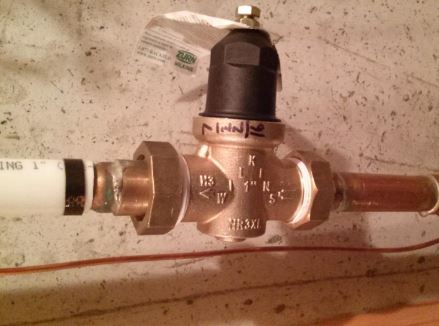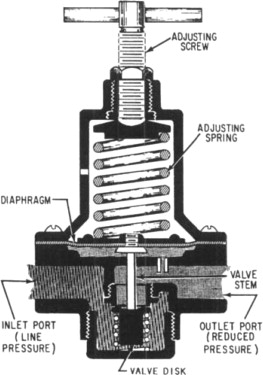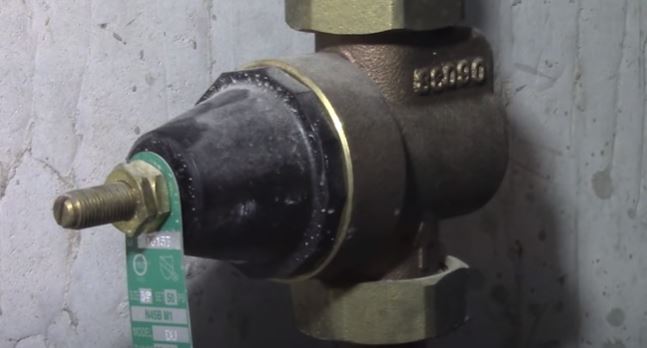
Pressure reducing valves (PRVs), also known as pressure regulators, are essential components in plumbing systems that help control and maintain safe and consistent water pressure throughout a building. Here are a few key facts about pressure reducing valves:
- Pressure Control: PRVs are designed to reduce and stabilize the incoming water pressure from the main water supply. They ensure that the pressure is at a safe and suitable level for household plumbing systems and appliances.
- Consistent Pressure: PRVs are particularly useful in areas where the municipal water supply pressure is too high. They prevent excessive pressure from causing damage to pipes, fixtures, and appliances, such as water heaters and washing machines.
- Safety and Efficiency: Maintaining proper water pressure helps prevent water hammer (sudden pressure spikes), which can damage pipes and create noise. PRVs also improve the efficiency of water use by reducing the force required for fixtures and appliances to operate.
- Adjustable Settings: Many PRVs allow for adjustment of the outlet pressure to meet specific needs. This flexibility is valuable in situations where different fixtures or appliances require varying water pressure levels.
- Maintenance: PRVs require occasional maintenance to ensure they continue functioning correctly. This includes inspecting for leaks, cleaning or replacing filters, and checking for pressure adjustments as needed.
- Installation: PRVs are typically installed on the main water line near the point where it enters a building. Proper installation is essential to ensure they function correctly.
- Different Types: There are various types of pressure reducing valves, including direct-acting, pilot-operated, and adjustable PRVs. The type selected depends on the specific requirements of the plumbing system.
- Check Valves: Some PRVs incorporate check valves to prevent backflow from the building into the municipal water supply. This helps maintain the integrity of the public water system.
- Regulatory Compliance: PRVs play a crucial role in meeting building codes and regulations related to water pressure control and plumbing system safety.
- Water Conservation: By reducing excessive water pressure, PRVs contribute to water conservation efforts and reduce water wastage. Lower pressure also reduces the risk of leaks in the plumbing system.
- Longevity: When properly maintained, PRVs can have a long service life, contributing to the durability and reliability of the plumbing system.
Do You Really Need a Pressure Reducing

To start with, the code requires a pressure reducing valve to be installed whenever the incoming water pressure exceeds 80 psi. That is however one of the those codes that are not followed to the letter and often left to the homeowner’s discretion.
Should you then install a pressure reducing valve? Are there any advantages of not installing a pressure reducing valve?
The number one reason people install pressure reducing valves is to protect their appliances and pipes from damages caused by high water pressure, and also save water. A pressure reducing valve will not increase the water pressure to your house if the water source has a low pressure to start with.
Most people find the sweet spot for water pressure to be around 40 to 70 psi. A good way to determine the best water pressure is to have is by measuring it during your household’s peak water demand.
Every appliance or fixture connected to your house will have a maximum water pressure rating. When the pressure is exceeded, the appliance will be strained thereby reducing their lifespan.
High water pressure will lead to leaking toilet fill valves, dripping faucets, leaking washing machines, dishwashers and water filters.
Another cause of high water pressure is noisy pipes. High water pressure causes vibrations across the water pipes. Continued vibrations results in loosening of the pipes’ studs and brackets. At that point, not only will you have vibrating pipes but they will be rattling and banging as well.
High water pressure will also increase the intensity of water hammers. For more information on water hammers check out this post.
Arguments against Pressure Reducing Valves Installation
Some plumbers believe installing a pressure reducing valve is totally unnecessarily. If you have lived in your house for more than a decade without a problem, why would you need the valve now?
That makes sense to some extent. There are plumbers who will come to your house and state to you that the code requires the valve to be installed whenever the pressure exceeds 80 psi. Of course these plumbers will be looking for way to earn an extra buck.
Here is the thing. Because you have lived in your house for 20 years without a problem does not water down the importance of a PRV. Remember that the more your house ages the more the plumbing ages as well, becoming susceptible to failure especially under high water pressure.
Your municipal water supply could also hook you up to a near water line with a higher water pressure than before. If you have been safe in the past you won’t be now.
Pressure reducing valves also means an extra cost. You will first need to buy the valve then pay a plumber to install it, unless you can install it for yourself which is not something most people can.
You will also not just install and forget a pressure reducing valve. It will need to be inspected (at least annually) otherwise it will fail when you least need it not to.
Installing a pressure reducing valve also means less space for the water in your water heater to expand to. This means you will also need to install a thermal expansion tank if you haven’t already. Another cost!
Failure to install a thermal expansion will result in a frequently leaking water heater temperature and pressure relief valve. More on that here.
How a Pressure Reducing Valve Works

As I mentioned earlier, the pressure reducing valve is located on the main water line to your house. This is important in ensuring that the water flowing to every fixture in the house has a standard pressure and not just some fixtures.
Note: Be careful while checking your house’s water pressure as some faucets especially outside water faucets may not be on the same line as other fixtures hence checking the water pressure from those valves will be a mistake.
Pressure reducing valves are operated using a screw at the top. The screw is connected to a spring inside the valve, which is also connected to a diaphragm. The spring and diaphragm are then connected to a pintle (bolt) which regulate the water flow.
That setup creates a variable water flow area.
By turning the screw at the top of the valve, you will be compressing or relaxing the spring. The incoming water pressure reacts to the tension on the spring and diaphragm.
When the water pressure increases, the force on the diaphragm increases which also results to increase in the spring force. This moves the pintle to close off the flow area of the water, thereby regulating the pressure. Reduction in water pressure creates the opposite effect.
How to Adjust a Pressure Reducing Valve

- Connect a pressure gauge to an outside water faucet (or any other faucet) and check the current water pressure. You can’t adjust the water pressure if you don’t known what the pressure in the house is. As you carry out this test, make sure there are no water fixtures running. This includes washing machines, dishwashers, showers, etc.
- Locate your pressure reducing valve. As I mentioned earlier, the valve will most likely be located very close to the main house shut off valve. Sometimes you will find it near the street next to the water meter.
- You will see a long screw tightened on the valve using a nut. Loosen the nut with a wrench or pliers.
- Adjust the water pressure. To reduce the water pressure, you will need to turn the screw counterclockwise. Turn the screw clockwise to increase the water pressure.
- Keep referring to the pressure gauge as you adjust the valve to make sure you get your desired water pressure.

Note: Some pressure reducing valves will have a small bolt at the top instead of a screw. They work the same as those with a screws only that you need to turn the bolt using a wrench/pliers.
- Tighten the nut. Do not forget to tighten the nut on the screw after adjusting the water pressure otherwise your water pressure will start fluctuating again.
Problems with Pressure Reducing Valves
As I had mentioned, pressure reducing valves will need constant maintenance otherwise having them can be a nuisance. One major problem that affects these valves is blockages by mineral deposits especially in areas with hard water.
A clogged valve means that the water pressure to your house will reduce way more than you would have wanted it to. Low water pressure is really annoying to have which I really don’t need to mention.
If you water pressure starts to drop and you have not tampered with the adjustment screw, you could have mineral deposits restricting the flow of water. A plumber can come in and clean the valve but if you are hand-on you can do it yourself.
A pressure reducing valve is mechanical device that is prone to wear and tear. Depending on how well you have maintained it as well as its quality, you will need to replace at some point.
You can also replace some internal valve parts instead of replacing the entire valve. This is why buying a high quality valve makes sense.
If you would like a recommendation on a decent pressure reducing valve, these one here is a really good.






